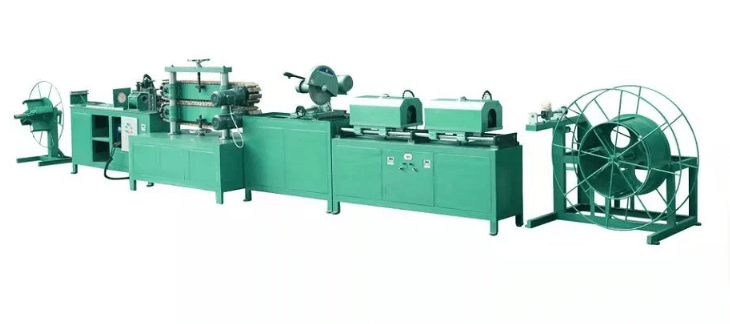Step 1: Raw Material Preparation The first step in the production line is to prepare the raw materials. For gas pipes, the primary material used is steel, while for water pipes, materials like steel, copper, or plastic are commonly used. The raw materials are sourced, inspected for quality, and then stored in the warehouse.
Step 2: Pipe Extrusion In this step, the raw materials are fed into an extrusion machine. The machine heats the materials to a molten state and then forces them through a die to form the desired pipe shape. The extruded pipes are cooled with water or air to solidify them.
Step 3: Pipe Sizing and Shaping The extruded pipes may not be in their final desired dimensions. In this step, the pipes go through a sizing process, where they are passed through rollers or mandrels to achieve the required outer and inner diameters. Additionally, any necessary shaping or threading of the pipes is done at this stage.
Step 4: Heat Treatment (Optional) For certain applications requiring increased strength and durability, pipes may undergo heat treatment. This involves subjecting the pipes to controlled heating and cooling processes to alter their microstructure and mechanical properties.
Step 5: Surface Treatment (Optional) Depending on the pipe’s intended use and material, a surface treatment may be applied. This treatment can include processes like galvanizing (zinc coating) to prevent corrosion or applying protective coatings.
Step 6: Quality Inspection After the pipes are formed, sized, and optionally treated, they undergo rigorous quality inspection. Various tests such as dimensional checks, pressure testing, material composition analysis, and visual inspections are performed to ensure they meet industry standards and specifications.
Step 7: Marking and Labeling In this step, the pipes are marked with relevant information, including their dimensions, material type, production date, and manufacturer’s details. This information aids in identifying the pipes and ensures compliance with regulatory requirements.
Step 8: Packaging and Storage Once the pipes pass quality inspection and are marked, they are carefully packaged to protect them during transportation and storage. Proper labeling is applied to the packages for easy identification. The packaged pipes are then stored in the warehouse awaiting shipment.
Step 9: Shipment The final step involves transporting the pipes to distribution centers, wholesalers, or directly to customers. Pipes are shipped in bulk, ensuring safe delivery to their intended destinations.
It is important to note that the specific steps and processes may vary depending on the type of gas or water pipe being produced, the manufacturing technology, and the equipment used in the production line.


